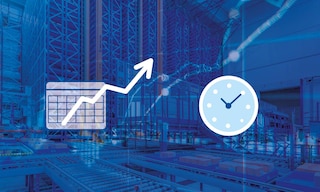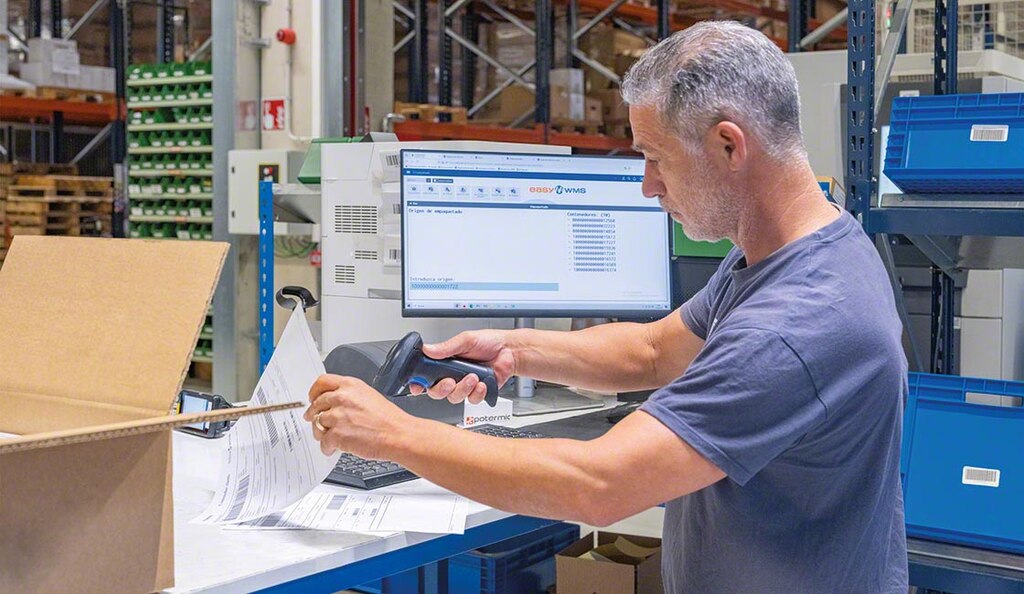
Time to value (TTV) and how to shorten it
In a market with countless options and competitors, companies must focus on refining their business and logistics operations to achieve the shortest time to value in their sector.
What is time to value?
Time to value (TTV) is a metric that indicates how long a person needs to perceive the benefits or usefulness of a product or service. Businesses strive to keep this period as short as possible to turn potential buyers into consumers. Managing user expectations while ensuring effective coordination and communication throughout the supply chain are critical for improving the customer experience and reducing time to value.
The time to value metric shouldn’t be confused with lifetime value (LTV), which refers to the net revenue a customer generates throughout their relationship with the company.
Types of time to value
Consumers may perceive different types of TTV, so retailers should keep them in mind:
- Time to basic value. This is the period customers need to evaluate the basic services a product can offer.
- Time to exceed value. This refers to the time users require to notice additional benefits they weren’t aware of. Exceeding expectations fosters a sense of loyalty.
- Immediate time to value. Some products or services deliver an immediate ROI, as the advantages promised in their value proposition are instantly clear to customers.
- Short time to value. This is linked to goods with benefits quickly recognized by consumers. It includes products that can be used right away with little to no setup.
- Long time to value. Other solutions require a longer onboarding or training process before users can benefit from them or fully enjoy their features.

What is the purpose of TTV?
Time to value is a crucial metric because it directly affects how consumers perceive a company and its products. Supply chain managers can implement measures to boost customer satisfaction and loyalty, which shortens time to value and can ultimately lead to increased revenue.
For example, businesses with logistics operations can monitor and optimize all processes and resources in their facilities with the Easy WMS warehouse management system. Designed for medium-sized and large facilities, this solution ensures comprehensive, real-time inventory traceability, drastically reduces errors, and increases productivity, delivering a fast return on investment (ROI).
How is TTV measured?
The time to value metric is an important metric not only for SaaS (software as a service) products but also for on-premise solutions (installed on the client’s infrastructure). Many companies rely on a time-to-value formula tailored to their operations to support performance optimization. In all cases, the strategies below can help measure time to value.
- Customer onboarding time. Businesses tend to implement software that’s intuitive and user-friendly.
- Time to adopt new features. Beyond basic functionality, top-performing products offer advanced capabilities that meet the needs of more discerning consumers.
- Time to reach ROI. Tailoring solutions to specific requirements can significantly reduce the time to ROI and time to value, an indicator of customer satisfaction.

How to minimize time to value
A company’s service strategy can be instrumental in accelerating its customers’ time to value.
- Create user-friendly products. In an increasingly complex world, effective yet simple solutions are the most appreciated. One way to achieve this goal is by considering feedback from existing users before adding new features.
- Offer training. Providing training to equip staff with the skills to operate and maintain systems can help them get the most out of the product. This is especially relevant for solutions with a longer time to value.
- Deliver outstanding customer service. Consumers need to feel supported throughout the system purchasing and implementation process. Having a responsive and committed team helps reduce their time to value.
- Embrace innovation. This enables companies to offer the latest technological advancements, delivering added value while staying ahead of the competition.
Optimize your logistics operations with Interlake Mecalux
An organization’s internal transformation is reflected in its customers’ satisfaction. For example, Normagrup, a market leader in emergency lighting, streamlined the storage and distribution of raw materials and components used on its production lines. To achieve this, our company implemented an automated storage and retrieval system (AS/RS) for boxes and Easy WMS in Normagrup’s facility. This AS/RS is connected with the three production lines and leverages all available space, housing 8,000 boxes in just 6,727 ft².
The AS/RS’s speed, together with the coordination and traceability provided by Easy WMS, enables Normagrup to move 8.75% of its stored boxes daily. The company is now more agile in serving its customers in the smoke detector, hospital equipment, and emergency lighting sectors.
Similarly, HAVI Logistics, a top European logistics service provider, gained faster access to its pallets with Mecalux Group mobile and push-back pallet racking in its Lodi (Italy) facility. Customer time to value has decreased, as HAVI Logistics has doubled its storage capacity while maintaining a high throughput. “To understand just how efficient this facility is, we have to look at some of the figures. First, our storage costs have gone down by 64%. Second, our capacity has increased by 55%. Third, the ROI is 1.2 years. Last but not least, all this has been achieved while maintaining a high level of productivity,” says Massimo d’Alessandro, Director of Operations at HAVI Logistics Italy.
Adapting to changes in logistics management is vital for business success. At Interlake Mecalux, we support you with both planning and executing your projects. As manufacturers of our own products, we’ve installed thousands of automated and conventional warehouses worldwide since 1966. Additionally, our team comprises hundreds of engineers dedicated to developing logistics software, while our robotics division consistently leverages the latest technologies. Feel free to contact us for advice on these and other storage solutions.
